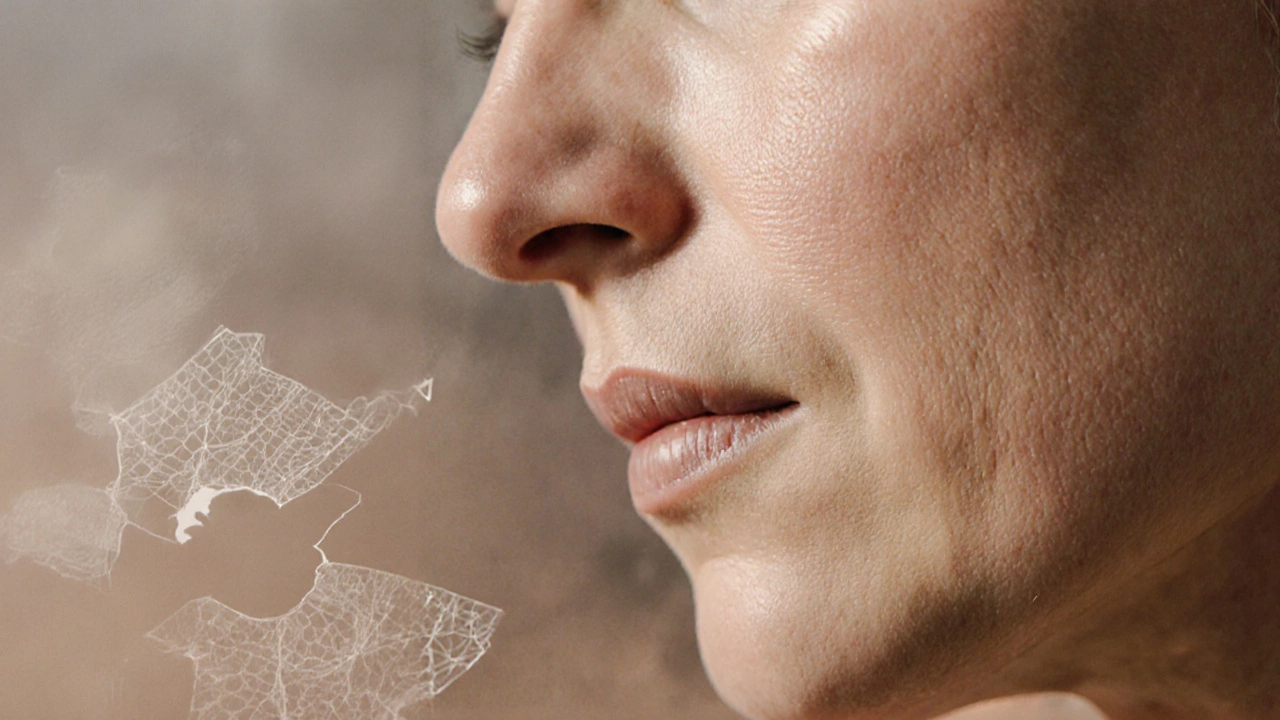Understanding sagging skin: Why It Happens and How to Fight It
When dealing with sagging skin, the loosening and drooping of facial or body tissue caused by age, lifestyle and loss of structural proteins. Also known as skin laxity, it often signals reduced collagen, the protein that keeps skin firm and elastic and insufficient hydration, the water content that plumps skin cells. Effective anti‑aging skincare, products with retinol, peptides and antioxidants that support collagen synthesis and protect against damage can slow this process, while targeted facial exercises help tone underlying muscles.
What Triggers the Droop?
First, consider collagen loss. As we age, fibroblasts produce less collagen, and existing fibers break down faster. This drop is measurable: studies show a 1%‑1.5% yearly decline after the mid‑20s. Less collagen means the skin’s scaffold weakens, leading to sag. Second, dehydration plays a hidden role. Even mild chronic water shortage reduces the skin’s turgor, making fine lines appear deeper and the surface less resilient. Third, lifestyle factors—sun exposure, smoking, poor diet—accelerate both collagen breakdown and moisture loss. Finally, muscle tone matters. When facial muscles weaken, the skin lacks support, especially around the jawline and cheeks.
Connecting the dots, we see that sagging skin encompasses three core elements: collagen deficiency, inadequate hydration, and weakened muscular support. Addressing any one of these aspects can improve the overall appearance, but the best results come from a combined approach.
Alright, how do you turn this knowledge into action? Start with a simple routine that covers the three pillars. For collagen, choose a serum rich in vitamin C and peptides; apply it after cleansing and before moisturizer. For hydration, drink at least eight glasses of water daily and look for moisturizers containing hyaluronic acid, which can hold up to 1,000 times its weight in water. For muscle tone, incorporate a five‑minute facial massage each night—think gentle upward strokes along the cheekbones and firm presses under the chin. This tiny habit stimulates circulation, encourages collagen production, and reinforces the supporting muscles.
Beyond daily habits, occasional professional treatments can amplify results. Microneedling creates micro‑channels that trigger the body’s repair mechanisms, boosting collagen and elastin. Radio‑frequency (RF) lifts tighten tissue through controlled heat. Both procedures fit nicely into the anti‑aging skincare umbrella and give a noticeable lift within weeks.
Now that you know the why and the how, the post collection below will dive deeper into each solution. You’ll find guides on the best anti‑aging drinks to hydrate from the inside, reviews of top skincare brands that prioritize collagen‑supporting ingredients, budget‑friendly organic lines for mature skin, and step‑by‑step routines that keep your skin firm all day. Whether you’re looking for quick lifestyle tweaks or a full‑blown anti‑aging plan, the articles ahead cover every angle of tackling sagging skin.

